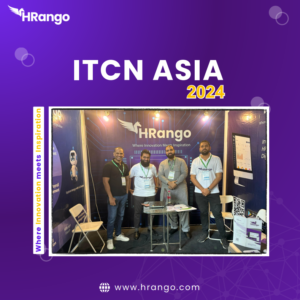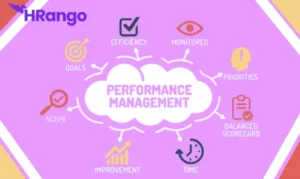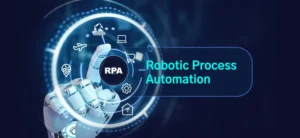Introduction
Recruitment and onboarding are pivotal processes that significantly impact an organization’s success. However, these processes are often fraught with challenges, from lengthy recruitment cycles to inconsistent onboarding experiences. Enter HRMS (Human Resource Management Systems), a technological solution that streamlines these crucial HR functions. This article explores how HRMS, with a particular focus on the hRango platform, can revolutionize recruitment and onboarding processes, making them more efficient, consistent, and cost-effective.
Understanding Recruitment Challenges
Recruitment, the first step in building a strong workforce, is often riddled with obstacles. Time-consuming processes, such as sifting through resumes and scheduling interviews, can delay hiring. Additionally, finding the right talent that aligns with both the job requirements and company culture is no easy feat. High recruitment costs and an inconsistent candidate experience further complicate matters, leading to potential talent loss.
How HRMS Transforms the Recruitment Process
HRMS offers a robust solution to these challenges by centralizing data management, automating routine tasks, and enhancing communication with candidates. By using HRMS, HR teams can store and access candidate data from a single platform, reducing the time spent on administrative tasks. Automation tools within HRMS can schedule interviews, send out emails, and even filter resumes based on specific criteria, allowing HR professionals to focus on more strategic activities. Moreover, HRMS provides data-driven insights that can guide hiring decisions, ensuring a better match between the candidate and the role.
The Role of hRango in Optimizing Recruitment
hRango stands out as a comprehensive HRMS platform tailored to optimize recruitment. It offers features such as automated job postings, AI-powered candidate screening, and a user-friendly interface that integrates seamlessly with existing HR systems. Hrango’s real-time analytics and reporting tools provide HR teams with actionable insights, helping them make informed decisions quickly. Case studies highlight how Hrango has successfully reduced time-to-hire and improved candidate satisfaction for several organizations.
The Importance of a Smooth Onboarding Process
Onboarding is the bridge that transforms a candidate into a productive employee. A well-structured onboarding process sets the tone for an employee’s journey within the organization, influencing their engagement and retention. Companies with effective onboarding programs see higher retention rates, faster time-to-productivity, and better compliance with company policies and regulations.
How HRMS Enhances Onboarding
HRMS enhances the onboarding experience by automating workflows, personalizing the onboarding journey, and tracking progress. Automated onboarding workflows ensure that every new hire goes through the necessary steps, from document submission to training completion, without delays. Personalization features in HRMS allow companies to tailor the onboarding experience to individual employees, making them feel valued from day one. Additionally, HRMS enables HR teams to track the onboarding process, collect feedback, and make necessary adjustments in real-time, ensuring continuous improvement.
Hrango’s Impact on Onboarding
hRango excels in creating a seamless onboarding experience with features designed to engage and support new hires. It offers customizable onboarding modules that can be tailored to fit the specific needs of different departments or roles within the company. hRango also provides tools for ongoing communication and feedback, ensuring that new employees feel supported throughout their onboarding journey. Real-life examples demonstrate how companies have leveraged hRango to create more engaging and effective onboarding processes, leading to higher employee satisfaction and retention.
Integrating Recruitment and Onboarding Processes
One of the key advantages of using an HRMS like Hrango is the seamless integration of recruitment and onboarding processes. When these processes are linked, data flows smoothly from one stage to the next, ensuring that new hires are not only the right fit but also onboarded efficiently. This integration reduces administrative overheads, minimizes errors, and provides a consistent experience for new employees, from the moment they apply to their first day on the job.
Key Benefits of Using HRMS and Hrango
The implementation of HRMS, particularly Hrango, brings several benefits. It significantly improves efficiency and productivity by automating routine tasks and providing centralized data management. The enhanced employee experience results from personalized and streamlined recruitment and onboarding processes. Cost savings are achieved through reduced time-to-hire, lower recruitment costs, and improved retention rates. Additionally, HRMS ensures better data security and compliance with legal regulations, protecting both the organization and its employees.
Challenges and Solutions in Implementing HRMS
While the benefits of HRMS are clear, implementation can come with challenges. Common obstacles include resistance to change, data migration issues, and concerns about data security. However, these challenges can be overcome by involving key stakeholders in the planning process, providing comprehensive training, and working with a trusted HRMS provider like hRango that prioritizes data security and offers robust support throughout the implementation process.
Hrango: A Comprehensive HRMS Solution
hRango is more than just a recruitment and onboarding tool; it is a comprehensive HRMS solution designed to meet the diverse needs of modern organizations. In addition to recruitment and onboarding, hRango offers modules for performance management, employee engagement, and payroll, among others. Compared to other HRMS platforms, Hrango’s user-friendly design, scalability, and strong customer support make it a preferred choice for businesses of all sizes.
Best Practices for Leveraging HRMS in Recruitment and Onboarding
To get the most out of HRMS, companies should follow best practices such as thorough planning and preparation, including stakeholder engagement and needs assessment. Training and ongoing support for HR teams are crucial to ensure that the system is used effectively. Continuous improvement is key, with regular updates and feedback loops to refine processes and adapt to changing business needs.
Future Trends in HRMS for Recruitment and Onboarding
The future of HRMS is promising, with trends such as AI and machine learning playing a growing role in recruitment and onboarding. These technologies can further automate and personalize HR processes, making them more efficient and effective. As remote work becomes more prevalent, HRMS will also need to support global recruitment and onboarding, ensuring a consistent experience regardless of location. Personalized employee journeys, powered by data and AI, will become the norm, helping companies attract and retain top talent.
Conclusion
In conclusion, HRMS platforms like Hrango are transforming recruitment and onboarding processes, making them more efficient, consistent, and aligned with organizational goals. By leveraging these tools, companies can gain a strategic advantage in the competitive talent market, ensuring that they attract, hire, and retain the best candidates. As HR technology continues to evolve, staying ahead of the curve with solutions like hRango will be key to future success.
FAQs
How does HRMS improve recruitment efficiency?
HRMS improves recruitment efficiency by automating routine tasks, centralizing data management, and providing data-driven insights that enhance decision-making, resulting in faster and more effective hiring processes.
What are the key features of hRango for onboarding?
hRango offers customizable onboarding workflows, ongoing communication tools, and progress tracking, ensuring a smooth and personalized onboarding experience for new hires.
How can HRMS reduce recruitment costs?
HRMS reduces recruitment costs by automating tasks, reducing time-to-hire, improving candidate matching, and minimizing administrative overheads, all of which contribute to more cost-effective recruitment.
What should companies consider before implementing an HRMS?
Companies should consider their specific needs, involve key stakeholders, plan for data migration, ensure data security, and choose an HRMS provider like Hrango that offers strong support and training.
How does hRango ensure data security?
hRango ensures data security through robust encryption, access controls, and compliance with legal regulations, protecting sensitive HR data from unauthorized access and breaches.







